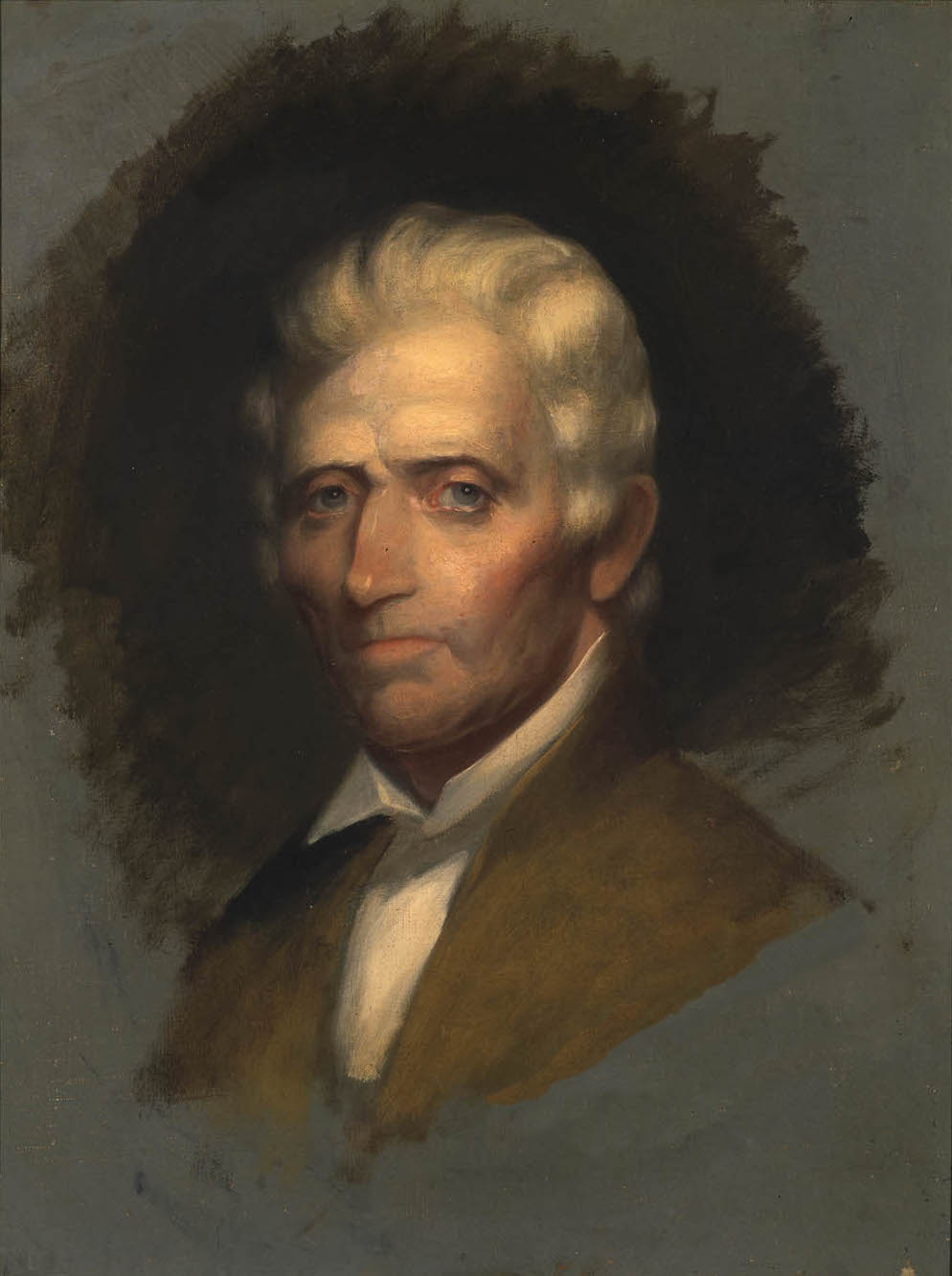It is also partly intended to show images, be they paintings, statues or photographs of the countenaces of men of yore. Because, quite frankly, many men wear the countenances of women these days: smiling, smirking, cooing, rolling their eyes, looking smug etc. It's a sign of the times, and by showing some images of men from the past, I hope to show some modern men why looking surly, frowning and giving hard-ball stares at people is something to do, something to practice.
 |
| Daniel Boone, 1820 (84 years old) |
Daniel Boone (November 2, 1734 [O.S. October 22] – September 26, 1820) was an American pioneer, explorer, and frontiersman whose frontier exploits made him one of the first folk heroes of the United States. Boone is most famous for his exploration and settlement of what is now Kentucky, which was then part of Virginia but on the other side of the mountains from the settled areas. Despite some resistance from American Indian tribes such as the Shawnee, in 1775 Boone blazed his Wilderness Road through the Cumberland Gap in the Appalachian Mountains from North Carolina and Tennessee into Kentucky. There he founded the village of Boonesborough, Kentucky, one of the first American settlements west of the Appalachians. Before the end of the 18th century, more than 200,000 European people migrated to Kentucky/Virginia by following the route marked by Boone.[2]
Boone was a militia officer during the Revolutionary War (1775–83), which in Kentucky was fought primarily between the American settlers and the British-aided Native Americans. Boone was captured by Shawnee warriors in 1778, who after a while adopted him into their tribe. Later, he left the Indians and returned to Boonesborough to help defend the European settlements in Kentucky/Virginia.
Boone was elected to the first of his three terms in the Virginia General Assembly during the Revolutionary War, and fought in the Battle of Blue Licks in 1782. Blue Lick was one of the last battles of the Revolutionary War, coming after the main fighting ended in October 1781.
Following the war, Boone worked as a surveyor and merchant, but fell deeply into debt through failed Kentucky land speculation. Frustrated with the legal problems resulting from his land claims, in 1799 Boone emigrated to eastern Missouri, where he spent most of the last two decades of his life (1800–20). Boone remains an iconic figure in American history. He was a legend in his own lifetime, especially after an account of his adventures was published in 1784, making him famous in America and Europe. After his death, he was frequently the subject of heroic tall tales and works of fiction. His adventures—real and legendary—were influential in creating the archetypal Western hero of American folklore. In American popular culture, he is remembered as one of the foremost early frontiersmen.
[..]
Early Life
Daniel Boone spent his early years on what was then the edge of the Pennsylvania frontier. Several Lenape Indian villages were nearby. The pacifist Pennsylvania Quakers had good relations with the Indians, but the steady growth of the white population compelled many Indians to move further west. Boone was given his first rifle at the age of 12, as families depended on hunting for much of their food. He learned to hunt from both local settlers and the Lenape, and he always loved it.
Source: http://en.wikipedia.org/wiki/Daniel_Boone
Check out some of the other entries from the 'Men of Yore' series:
[End.]
No comments:
Post a Comment